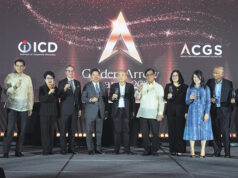The education system in the Philippines, according to an Oxford Business Group (OBG) report, has undergone an evolution that spans over hundreds of years as shaped by the country’s colonial and post-war history.
From being under the colonial rule when not all Filipinos have access to learning, the country, to date, focuses on expanding access to education — in recognition that education is a means of reducing poverty and improving national competitiveness.
In a further bid to better equip the country’s learners and enhance their competitiveness, the government signed the Enhanced Basic Education Act also known as the K to 12 program in 2013. The law adds two years to the basic education of students.
Meanwhile, amid the rise in globalization and digital revolution which continue to disrupt and pervade various systems, the landscape of educational systems around the world, including the Philippines, continue to undergo drastic transformation. From the traditional discipline of classroom learning where textbooks are the main source of information, various online learning tools now complement student learning.
“The widespread use of the Internet and the revolution in information and communication technology (ICT) have led to new methods of teaching and learning, such as blended learning and e-learning,” Asian Development Bank (ADB) noted in a 2017 article.
“Blended and e-learning can broaden teaching and learning by providing additional tools to explain complex issues or retain student attention. These approaches also expand access to quality education by allowing students to learn anywhere and anytime as well as learn from experts from any part of the world,” the article continued.
ADB also said that online learning could serve as an equalizer because it provides access to resources that are normally not available to remote schools.
As Internet connectivity increases in the Philippines, students — who are getting more digital-savvy — also gain easier access to endless information and educational materials online.
In recent years, the country saw reports that gamification of education can benefit students and enhance their educational experience as studies show that playing is vital for children. Gamification is defined as the usage of gaming principles and techniques in non-game contexts.
Various online platforms offering tutorial services and other learning activities use this element to make lessons more fun and engaging. Learning tools in the form of mobile applications can also be easily downloaded nowadays.
Reports have stated that gamification “increases engagement.” It is also said that when lessons are delivered using elements of a game, which are often interactive and challenging, students tend to remember it easily.
Learning is also not limited to the confines of educational institutions with the emergence of massive online open courses (MOOCs), which allow more flexibility in learning. These courses may range from humanities to science and information technology among others. MOOCs also open opportunities not just for students but also working professionals who want gain knowledge on different disciplines without having to attend a formal school or university.
According to the Philippine Institute for Development Studies, MOOCs is a good way to make education inclusive since these courses are often open, affordable, and self-paced. — Romsanne R. Ortiguero


